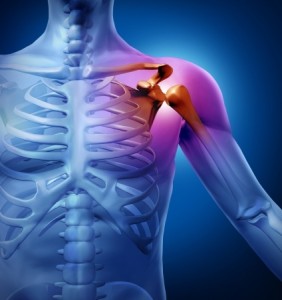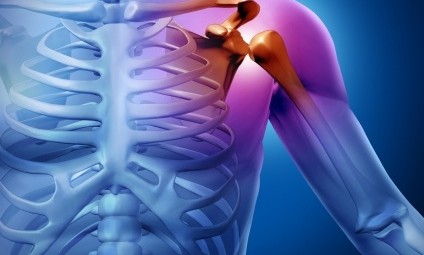The clavicle, or collarbone, connects the breastbone (sternum) to the shoulder blade (scapula). Clavicle fractures are one of the most common sports injuries among cyclists, frequently occurring after a fall in which the shoulder breaks the fall.
Clavicle Fracture Identification & Intervention
Since clavicle fractures normally occur after a fall or some other type of trauma, it’s  usually immediately obvious that something is wrong. Clavicle fractures cause severe pain, and typically make it impossible to lift the arm. It’s usually possible to feel that the bone is broken by touching it.
usually immediately obvious that something is wrong. Clavicle fractures cause severe pain, and typically make it impossible to lift the arm. It’s usually possible to feel that the bone is broken by touching it.
After falling off a bike, the immediate priority is to ensure the victim’s safety – checking for spinal cord injuries, moving away to a safe space if possible. If only the shoulder is affected, it is important to get to a hospital as soon as possible for diagnosis and treatment. A broken bone is a medical emergency, and it is always better to err on the side of having it looked at than on the side of not getting necessary treatment.
Even though doctors can feel that the clavicle is broken in the majority of cases, it will still be necessary to do an x-ray to see exactly how severe the break is.
Clavicle Fracture Surgery
Often, clavicle fractures can be treated without surgery. Keeping the shoulder in a sling allows the shoulder to heal, although there will still be a bump where the fracture occurred. Even without surgery, full function can often return to the surgery.
On the other hand, sometimes the shoulder fractures in multiple places or the fractured parts become widely separated. In addition, surgery is necessary if the bone breaks through the skin. During surgery, the clavicle fracture surgeon will set the bone into an appropriate position (open reduction), then fixate it using plates, rods, or screws (internal fixation). After surgery, the treatment process will be similar to any other clavicle fracture.
Surgery takes place in the hospital, usually on an emergency basis. After surgery, patients usually stay in the hospital for at least a day, and up to several days. During the hospital stay, the nurses and doctors will carefully monitor the clavicle’s healing and the patient’s reaction to surgery. When discharged, the patient will receive detailed information about how to care for the collarbone.
Top Clavicle Fracture Surgeon
Dr. Howard Marans of OC Orthopedic is the top clavicle fracture surgeon in Orange
County. Dr. Marans is a skilled sports medicine doctor with over 20 years of experience in the field. He has helped hundreds of patients recover from fractures.
Dr. Marans would be happy to meet with you about your clavicle fracture or other sports injury. To schedule a consultation with Orange County’s top clavicle fracture surgeon, please click below and enter your information or call us at 714.979.8981.





